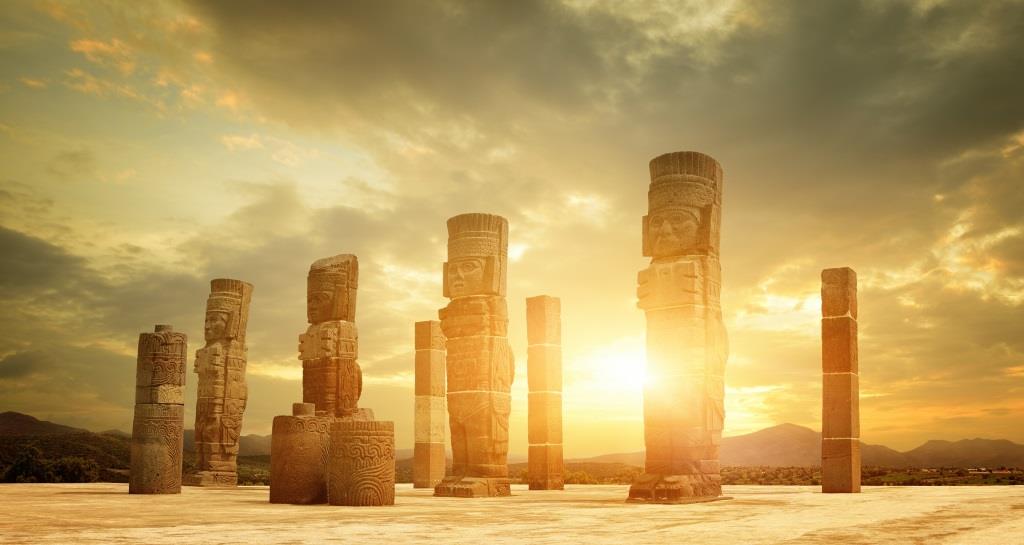One of the most beautiful things about Mayan culture and history is that it is so utterly fascinating.
In fact, there are still millions of people alive today in Guatemalan who identify as Mayan. They speak Mayan languages, eat Mayan-influenced food and consider themselves to be part of a culture that is still very much alive.
Any visitor to Guatemala will feel this. It is a living, breathing part of everyday life in the country. Mayan culture influences everything, from food to music, art to architecture. Here are some interesting facts about Mayan culture.
1. The Mayan civilisation was huge
When the Spanish arrived in Central and South America, the Mayans numbered in their millions. They lived in vast cities, some with up to 100,000 people, and were spread across an area of over 150,000 square miles. Their main territory was the modern states of Honduras, El Salvador, Mexico, Belize and of course, Guatemala.
What we think of as the Mayan civilisation was actually made up of a number of independent ‘city states’, a little like the ancient Greeks. Each had their own king, who ruled the city and the surrounding area.
So why do we think of them as a single civilisation? Well, again, like the Greeks, they shared a rich, common culture. Like most societies, they included many different groups, from farmers to craftspeople, bureaucrats to nobility. They had close links with each other in terms of language and cultural traditions.
2. Not all Mayan languages are the same
Ancient Mayans spoke similar languages, that were a part of the ‘Mayan language family’. But that doesn’t necessarily mean that they understood each other. Because the Mayan civilisation was spread over such a wide area, languages developed almost independently of each other.
To see the impact of this, you only need to look at the situation today. Across the six million or so people who self identify as Mayans today, there are 31 different languages spoken. And while these different languages share many of the same characteristics, one group is unlikely to understand another.
3. The Mayans have strongly influenced Guatemalan modern art
Walk through any Guatemalan city and there is a good chance you will see some obvious echoes of Mayan culture. Modern Guatemalan art is powerfully influenced by Mayan culture.
One of the most significant Guatemalan artists of the 20th century, Carlos Mérida, fused traditional Mayan themes with European traditions to great effect. You can still see some of his public works (in the form of vast murals) on public buildings in Guatemala City.
The Mayans also strongly influence crafts such as weaving, and you can see many beautiful examples of textile work in markets up and down the country.
4. Mayan religious traditions are alive and well
It is one of the most vivid, vibrant and spectacular examples of how important Mayan culture still is in modern Guatemala. Religion is a huge part of daily Guatemalan life (Mayan or otherwise) and is dominated by Catholicism.
Many Mayans were forced to convert during the conquest by the Spanish, and yet despite this much of the ancient religion lives on today. It turns out that the two religious traditions shared a lot of similarities.
The version of Catholicism practiced by modern Mayans is a rich mix of ancient traditions. Human sacrifice was once a key part of Mayan religion. Thankfully, that’s a tradition that hasn’t survived, but you’re still likely to see chickens and other animals used as offerings to the gods.
5. Modern Mayans face challenges
Reading this, you might be surprised by the number – and influence – of Mayan people across Central and South America today. Did you know that 60% of modern day Guatemalans are of Mayan descent?
And while their culture is alive and well, many Mayan people face challenges. Communities in areas like the Petén region in Guatemala face pressure to fell the rainforest to make way for farmland.
Tourism is an important source of income for many, but huge numbers of visitors bring their own issues. And most of all Mayans face an ongoing struggle to maintain their unique cultural identity, in the face of the modern world.
The Mayans have survived by adapting and transforming their culture to fit with each new era. And modern Guatemala is a richer, more fascinating place because of its Mayan influences.


